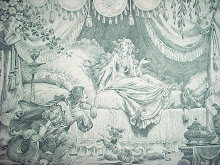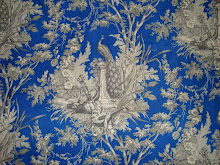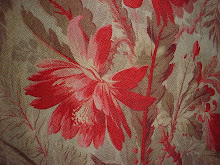









Early lace is very different from what most people think of as lace today, I like to think of it visually as the type of lace seen decorating the clothes of people in 16th & 17th century Old Master paintings. Lace was worn and purchased by the very wealthy as a status symbol, and the finest laces in their collections were worn when sitting for family portraits.
This post is looking at an example of early Flemish bobbin lace I sold last year - I still have a very long flounce in my collection made from the same lace - dating to about 1650-80. It is a small panel made from fine linen thread in the Italian baroque style, with its typical large exotic flowers and the sweeping curves of its leaves and stems. It is know as a guipure lace, as the motifs are relatively close to each other, either connected by little bars or linked where they touch as opposed to those laces where the motifs are connected by a mesh ground.
The contemporary painting above shows a collar made from this type of lace, and I have shown a picture of a remarkably similar example from one of my reference books. Both photos have come from the book Antique Lace: Identifying Types & Technique by Heather Toomer, a highly recommended book if lace interests you, full of superb pictures and accurate & informative text.
The contemporary painting above shows a collar made from this type of lace, and I have shown a picture of a remarkably similar example from one of my reference books. Both photos have come from the book Antique Lace: Identifying Types & Technique by Heather Toomer, a highly recommended book if lace interests you, full of superb pictures and accurate & informative text.



































































































I found your article and pictures very interesting - I am not actually a lace fan but this knowledge is very useful and graphic - Heather Toomer is a good contact in this part of the world and has an amazing collection
ReplyDeleteThanks Elizabeth, I shall be posting a similar piece about some Venetian lace of the same period soon that may interest you.
ReplyDelete